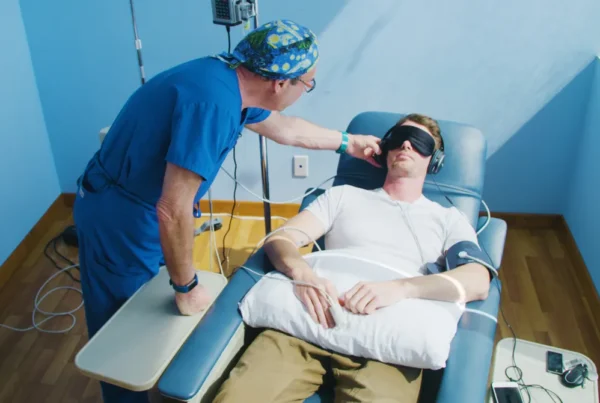Depression and anxiety can be debilitating illnesses that create a considerable impact on a person’s life. In recent years, there has been growing attention towards innovative treatment options, with one approach that’s been gaining notable acclaim – Ketamine Treatment. In providing a hopeful pathway to healing, Ketamine Treatments sheds new light on tackling these concerning mental health issues.
Understanding Depression and Anxiety
Depression is far more than just a gloomy day or temporary sorrow. It is a persistent mental health disorder marked by intense feelings of sadness, hopelessness, and loss of interest in daily activities. On the other hand, anxiety disorder isn’t simply everyday nervousness. It presents as excessive and persistent worry and fear, causing substantial disruptions to daily life.
Regrettably, these disorders are rather prevalent. The World Health Organization (WHO) estimates that almost 300 million people worldwide suffer from depression, with anxiety disorder affecting over 260 million. The burden these disorders impose on individuals is tremendous, often leading to significant distress and hindering everyday functions.
Traditional treatments for depression and anxiety typically involve psychotherapy and a range of medications like SSRIs (Selective Serotonin Reuptake Inhibitors). While these treatments have proven beneficial for many, some individuals find limited relief, causing them to search for effective alternatives.
The Emergence of Ketamine as a Treatment Option
The treatment of ketamine was once known primarily for its anesthetic properties, ketamine has experienced a renaissance of sorts within the field of psychiatry. The shift in perception started in the early 2000s with a groundbreaking study at Yale University, highlighting ketamine’s potential as a rapid-acting antidepressant. This marked a significant divergence from typical depression medications, which often require weeks to take effect.
The Food and Drug Administration (FDA) took notice, and in 2019, it approved ketamine, a derivative of ketamine, for use in treatment-resistant depression. This offered hope to those struggling with chronic depression who didn’t respond adequately to standard treatments.
How Does the Process of Ketamine Treatment Work?
Unpacking the science behind Ketamine Treatment reveals a fascinating process. Unlike traditional antidepressants that focus on the monoaminergic system, ketamine works through the glutamate system, a key player in neural activation and synaptic plasticity. This new route of action is considered to be a major reason behind ketamine’s efficacy.
Available in multiple forms — oral, intravenous, and nasal, ketamine provides versatility in treatment application. The FDA-approved esketamine comes in a nasal spray form, which simplifies its application. Intravenous ketamine, administered in controlled clinical settings, provides a more immediate response. These treatments are generally given over a span of several weeks, following a careful treatment plan developed by a healthcare professional.
The process of ketamine treatment involves creating an individualized treatment regimen for every patient. This typically starts with an initial consultation, followed by monitored treatment sessions, and subsequent follow-up reviews. The ultimate aim is to help the patient toward a healthier mental state, providing increased hope and creating an opportunity for healing.
Incorporating the treatment into patient care has indeed begun to transform lives, remarkably aiding in the battle against depression and anxiety. As our understanding and scientific knowledge increase, it’s an approach that appears to hold immense promise for the future. It’s a new day in the world of mental health treatment, and Ketamine Treatments is leading the way.
The Efficacy of Treatment of Ketamine
In the realm of mental health, this treatment has emerged as a revolution. It has displayed promising results in a short span, particularly for those grappling with treatment-resistant depression. According to a landmark study conducted by Yale University, Ketamine Treatments has demonstrated a substantial reduction in depression symptoms, often within four to 24 hours of treatment. This is significantly faster compared to traditional antidepressants, which can take weeks, even months, to show effects.
Another impressive aspect of Ketamine Treatments is its impact on suicidal ideation. Research reveals that improvements in suicidal ideation after ketamine infusion are not only related to, but also driven by, improvements in depression and anxiety symptoms. For many individuals wrestling with these dreadful thoughts, this could potentially offer a life-saving intervention.
Contemplating the Side Effects and Considerations
While Ketamine Treatments can be a powerful tool in the battle against depression and anxiety, awareness of potential side effects and considerations is essential. Some individuals, though not all, have reported experiencing temporary side effects such as nausea, increased blood pressure, or hallucinations. These events emphasize the importance of a monitored setting for treatment.
Additionally, the treatment may not be suitable for everyone. Specific cases, particularly those with chronic health issues or certain mental conditions, might necessitate extra consideration. It should also be noted that Ketamine Treatments is not a first-line treatment and is usually considered when traditional methods haven’t produced the desired results. These insights are a stark reminder to consult with a healthcare professional before beginning any form of treatment regimen.
Exploring Personal Experiences and Case Studies
Personal experiences with Ketamine Treatments offer unique insights into its practical application. For instance, some patients have described the experience as a temporary disconnection from their environment, subsequently replaced with a sense of peace and contentment. Yet, experiences are not universal—for others, it can initially be an intimidating process.
This subjective variability doesn’t diminish the potential for the treatment to positively transform lives. A multitude of case studies and individual narratives reflect profound success stories, with significant reductions in depression and anxiety symptoms leading to enhanced lives and restored hope.
Future Perspectives on Ketamine Treatment
Naturally, with any innovative treatment like Ketamine Treatment, the question arises—what does the future hold? Currently, the FDA has only approved it specifically for treatment-resistant depression, not for anxiety. Yet, this hasn’t stopped further research and advancements.
Noteworthy, recent research studies are investigating the role of anxiety disorders, alongside ongoing advancements to improve its usage. This future-focused approach, coupled with the past and present success of Ketamine Treatments, breeds further hope for countless individuals grappling with mental health challenges.
The Process of Ketamine Treatment: A Path to Mental Health Relief
Ketamine, originally an anesthetic, has emerged as a promising treatment for various mental health conditions, particularly depression and some mood disorders. Understanding the process of ketamine treatment is crucial for those seeking relief from these debilitating conditions.
Evaluation and Consultation: The journey begins with an evaluation by a qualified healthcare professional who assesses the patient’s mental health history and determines if ketamine therapy is suitable.
Pre-Treatment Preparations: Before each session, patients are instructed to avoid eating for several hours. They are then comfortably seated in a controlled environment, often a medical office, to ensure their safety.
Ketamine Infusion: Ketamine is administered intravenously at a controlled and monitored dose. The infusion typically lasts around 40 minutes. Patients remain awake during the process but may experience altered perceptions.
Psychological Support: Many clinics offer psychological support during the treatment to help patients navigate any psychological or emotional experiences that may arise.
Follow-Up Sessions: Ketamine therapy is often administered in a series of sessions, with a specific schedule tailored to the patient’s needs.
Monitoring and Adjustments: The patient’s progress is closely monitored, and adjustments are made to the treatment plan as necessary to optimize outcomes.
Ketamine treatments offers a glimmer of hope for individuals struggling with treatment-resistant depression and other mental health conditions. While it can provide rapid relief, it should always be administered under the supervision of a trained medical professional to ensure safety and effectiveness.
Conclusion
This journey through understanding the process and potential of treatment of ketamine. For depression and anxiety illuminates a heartening prospect in the world of mental health. While it’s not a magic bullet and carries its own set of considerations, the scope and potential for Ketamine Treatment to restore hope and facilitate healing is undeniable. As we continue to learn and grow in these domains, the promise of peace. And happiness remains a tangible possibility for many. Stay strong, stay steadfast, and remember—there’s always hope.



